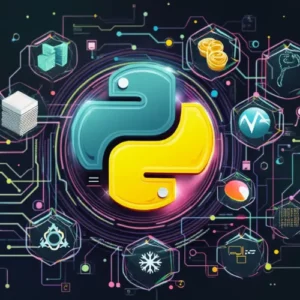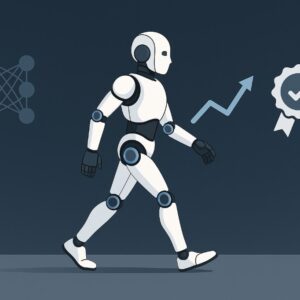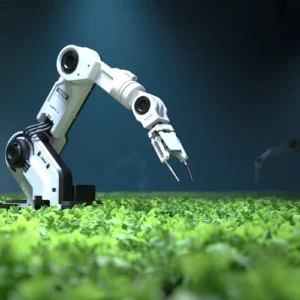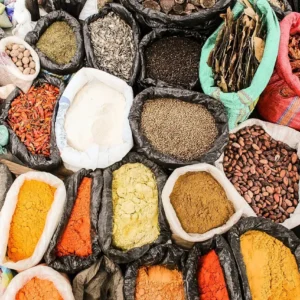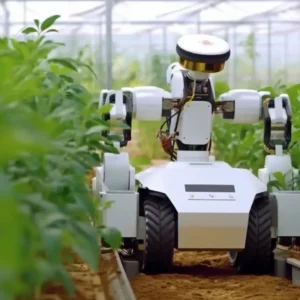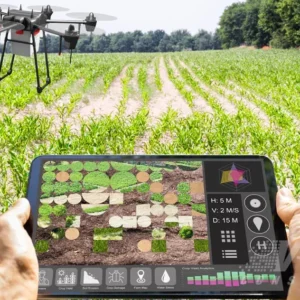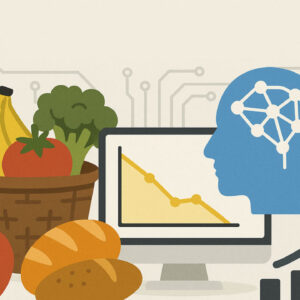Food security remains one of the most pressing global challenges of the 21st century and AI is now here to achieve it. With a growing population projected to reach nearly 10 billion by 2050, the pressure on food systems to deliver sustainable, nutritious, and accessible food for all is unprecedented. This challenge is compounded by climate change, geopolitical instability, and resource scarcity. Amid these complexities, artificial intelligence (AI) emerges as a transformative tool to revolutionize how we approach food production, distribution, and consumption. From enhancing agricultural productivity to reducing food waste and fostering innovative food sources, AI offers multifaceted solutions to ensure a sustainable future.
1. Optimizing Agricultural Productivity with AI for Food Security
Agriculture forms the backbone of food security, and AI offers tools to enhance efficiency and sustainability in this critical sector. By using advanced technologies, farmers can make informed decisions to increase productivity while conserving resources.

1.1 Precision Farming and Data Analytics
AI-powered precision farming uses sensors, drones, and machine learning algorithms to analyze soil health, monitor crop conditions, and predict weather patterns. This data-driven approach helps farmers optimize inputs such as water and fertilizers, improving yields and reducing waste. These technologies not only enhance productivity but also promote sustainable practices by minimizing resource use and environmental impact. With real-time data at their fingertips, farmers can adapt to changing conditions and make proactive decisions to protect their crops.
1.2 Pest and Disease Management
AI can detect pests and diseases early by analyzing environmental data and plant health patterns. By enabling timely interventions, these systems minimize crop loss and protect livelihoods, contributing to overall food security. Advanced image recognition tools and predictive models ensure that interventions are targeted and effective, reducing the need for broad-spectrum chemical treatments and preserving ecosystems. This level of precision also empowers small-scale farmers, enabling them to compete in a rapidly evolving agricultural landscape.
2. Streamlining the Food Supply Chain with AI
Efficient supply chains are essential to prevent food wastage and ensure equitable distribution. AI-driven solutions enhance logistics, storage, and inventory management, addressing critical inefficiencies.
2.1 Predictive Analytics for Demand and Supply
AI models analyze market trends and consumer behavior to predict demand accurately enabling us for food security. This information helps businesses manage inventory effectively, reducing the risks of overstocking or understocking. By aligning supply with demand, AI minimizes waste and ensures that resources are allocated efficiently. Retailers and suppliers can use these insights to optimize procurement and avoid disruptions, ultimately benefiting consumers with consistent access to fresh products.
2.2 Reducing Food Waste Through Logistics Optimization
AI-powered logistics systems ensure timely transportation and storage of perishable goods. By optimizing routes and storage conditions, these technologies minimize spoilage and wastage across the supply chain. Smart sensors monitor temperature and humidity during transit, ensuring that perishable items remain fresh. Additionally, AI-driven platforms facilitate real-time communication between stakeholders, enabling rapid responses to unforeseen challenges and enhancing the overall resilience of the supply chain.
3. Addressing Climate Change Impacts on Food Security with AI
Climate change poses significant challenges to global food systems, but AI offers innovative solutions to adapt and mitigate its effects for better food security. By leveraging predictive models, stakeholders can make informed decisions to build resilience.
3.1 Climate-Resilient Crop Planning
AI can guide farmers in selecting crop varieties suited to changing climatic conditions. These tools also recommend optimal planting schedules to maximize productivity under varying environmental conditions. For instance, machine learning algorithms analyze historical weather data and forecast future trends, enabling farmers to anticipate challenges such as droughts or floods. This proactive approach reduces risks and enhances food security in vulnerable regions.
3.2 Carbon Footprint Reduction in Agriculture
AI helps reduce the environmental impact of farming by optimizing resource use and promoting sustainable practices. These efforts align agriculture with global climate goals, contributing to a more sustainable future. From precision irrigation systems that conserve water to AI-guided fertilization that minimizes runoff, these technologies address the dual challenges of productivity and sustainability. By adopting AI-driven solutions, the agricultural sector can play a pivotal role in combating climate change.
4. Innovating Food Sources with AI
As traditional food production faces limitations, AI drives the development of alternative and sustainable food sources. These innovations address both nutritional needs and environmental concerns.
4.1 Development of Plant-Based Proteins
AI assists in formulating plant-based proteins that mimic the taste and texture of animal products. These alternatives cater to the growing consumer demand for sustainable and nutritious food options. By analyzing vast datasets on flavor profiles and ingredient interactions, AI accelerates the development of products that appeal to diverse palates. This innovation not only reduces the reliance on livestock but also addresses concerns related to health and environmental sustainability.
4.2 Lab-Grown Meats and Novel Foods
Using AI, researchers can optimize the production of lab-grown meats and other innovative food products. These advancements reduce reliance on resource-intensive agriculture while meeting dietary needs. AI streamlines the complex processes involved in cell culture and tissue engineering, making lab-grown meats more affordable and scalable. Novel foods, such as algae-based snacks and insect-derived proteins, also benefit from AI-driven research, expanding the range of sustainable dietary options.
5. Promoting Equity and Accessibility Through AI (Food Security)
AI has the potential to bridge gaps in food distribution, ensuring that underserved communities have access to nutritious food. By analyzing data, targeted interventions can address disparities effectively.
5.1 Identifying and Addressing Food Insecurity Hotspots
AI models analyze socioeconomic data to pinpoint regions facing food insecurity. Governments and NGOs can use these insights to deploy resources strategically and close gaps in food availability. These models incorporate factors such as income levels, geographic isolation, and climate vulnerabilities, providing a comprehensive picture of food security challenges. By focusing efforts where they are needed most, these organizations can maximize the impact of their interventions.
5.2 Connecting Surplus Food to Communities in Need
Platforms powered by AI facilitate the redistribution of surplus food, reducing waste while supporting vulnerable populations. These systems create a win-win scenario for producers and consumers alike. Apps and platforms match surplus food from retailers and restaurants with food banks and community organizations, ensuring that excess food reaches those in need. This approach not only alleviates hunger but also reduces the environmental impact of food waste.
6. Building Resilient Urban Food Systems
Urbanization presents unique challenges to food security, but AI-driven technologies enable innovative solutions for urban agriculture and food distribution.
6.1 Vertical Farming and Hydroponics
AI optimizes conditions in vertical farms and hydroponic systems, ensuring high yields in limited spaces. These methods bring fresh products closer to urban consumers, reducing reliance on long supply chains. By controlling variables such as light, temperature, and nutrient levels, AI ensures consistent and efficient production. Urban farming initiatives supported by AI also foster community engagement and education around sustainable food practices.
6.2 Smart Food Distribution Networks
AI streamlines food distribution within cities, improving efficiency and reducing costs. By analyzing demand and traffic patterns, these networks ensure the timely delivery of food to urban populations. Advanced routing algorithms and predictive analytics enable logistics companies to reduce delays and emissions, enhancing the overall sustainability of urban food systems.
7. Enhancing Food System Security Through Collaboration
Global collaboration is essential to leverage AI’s full potential for food security. Sharing knowledge and resources fosters innovation and strengthens collective responses to challenges.
7.1 International Data-Sharing Initiatives for AI in Food Security
AI-powered global monitoring systems provide real-time insights into food production and distribution trends crucial for ensuring food security. These platforms enable countries to collaborate on addressing food security crises. Food producers and organizations can develop coordinated strategies to mitigate risks and enhance resilience by sharing data on crop yields, weather patterns, and market conditions.
7.2 Public-Private Partnerships in AI Development
Partnerships between technology companies, governments, and agricultural stakeholders drive the development and deployment of AI solutions one step forward. Aligning resources ensures that innovations are scalable and accessible. Collaborative projects must focus on developing affordable and user-friendly technologies that meet the needs of diverse communities, from smallholder farmers to large agribusinesses.
8. Overcoming Barriers to AI Adoption in Food Security
While AI offers immense potential, several challenges hinder its widespread adoption. Addressing these barriers is critical to unlocking its benefits for global food security.
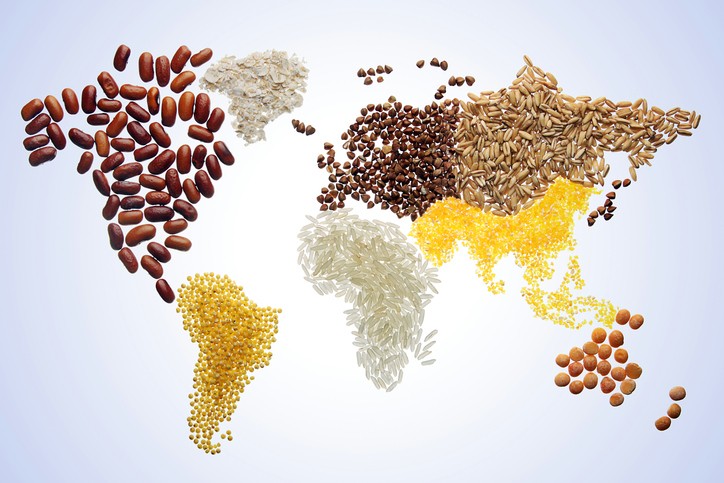
8.1 Infrastructure and Cost Challenges
High costs and limited infrastructure often prevent the adoption of AI technologies in low-income regions. Investments in affordable solutions and infrastructure development are crucial to overcoming these hurdles. Subsidies, grants, and public-private partnerships can help bridge the gap, ensuring that AI-driven innovations reach even the most marginalized communities.
8.2 Capacity Building and Training for Food Security with AI
Educating farmers, supply chain managers, and policymakers about AI tools ensures effective implementation. Collaborative efforts can establish training programs to build the necessary skills. By empowering stakeholders with knowledge and resources, these initiatives promote the equitable adoption of AI technologies and maximize their impact on food security.
9. The Future of AI in Food Security
As AI continues to evolve, its applications in food systems will expand, offering new opportunities to address emerging challenges for food security. Ongoing research and innovation are key to unlocking its potential.
9.1 Autonomous Farming Systems
AI-driven robotics and drones promise to revolutionize agriculture by automating labor-intensive tasks. These technologies enhance efficiency and productivity, particularly in regions with labor shortages. Autonomous systems can monitor crops, apply treatments, and harvest products with precision, reducing the need for manual labor and increasing scalability.
9.2 AI-Powered Nutritional Analysis
AI tools can analyze individual dietary needs, guiding consumers toward healthier choices. By promoting balanced nutrition, these technologies contribute to improved health outcomes globally. Personalized nutrition apps use AI to recommend meal plans and track dietary habits, empowering individuals to make informed decisions about their health.


